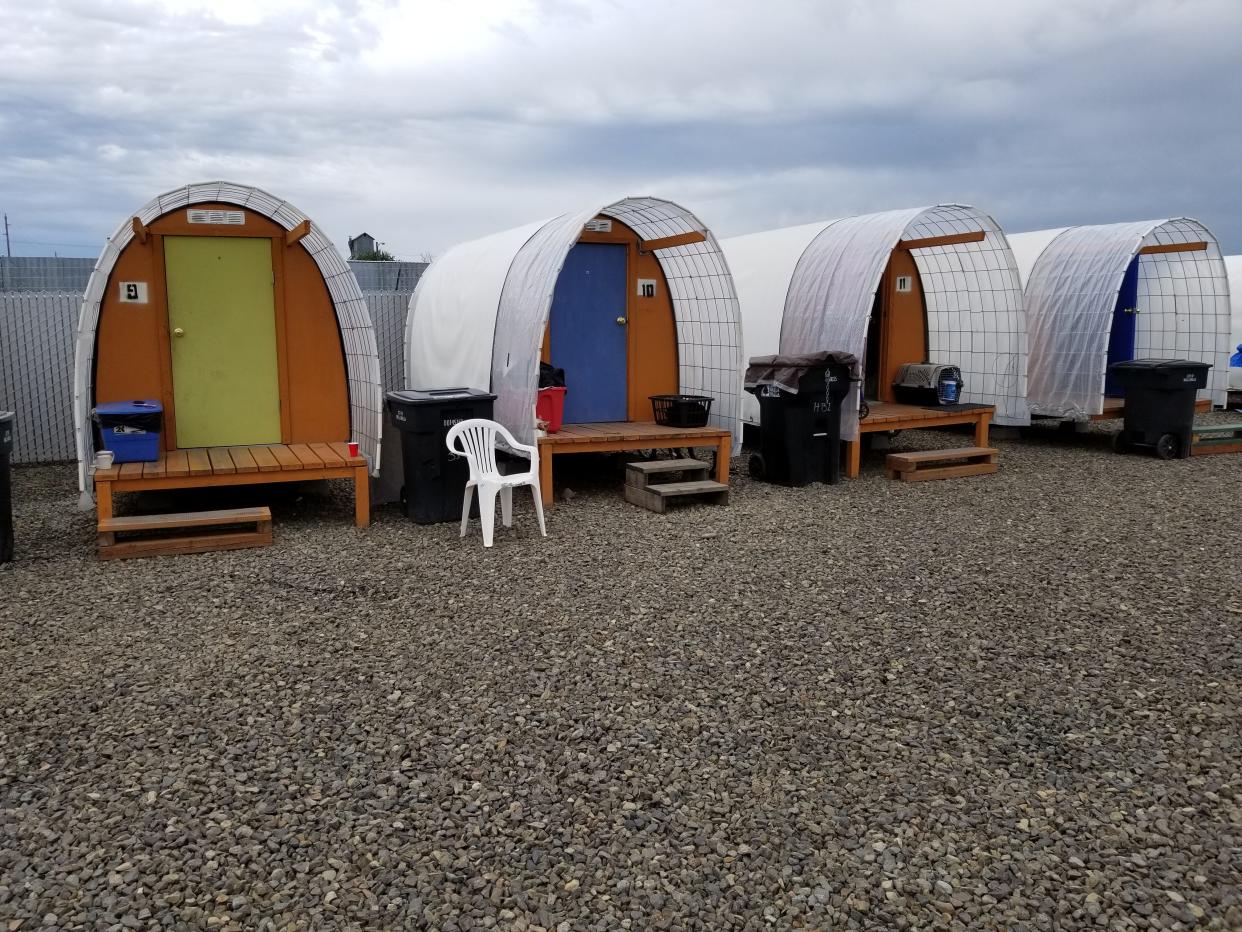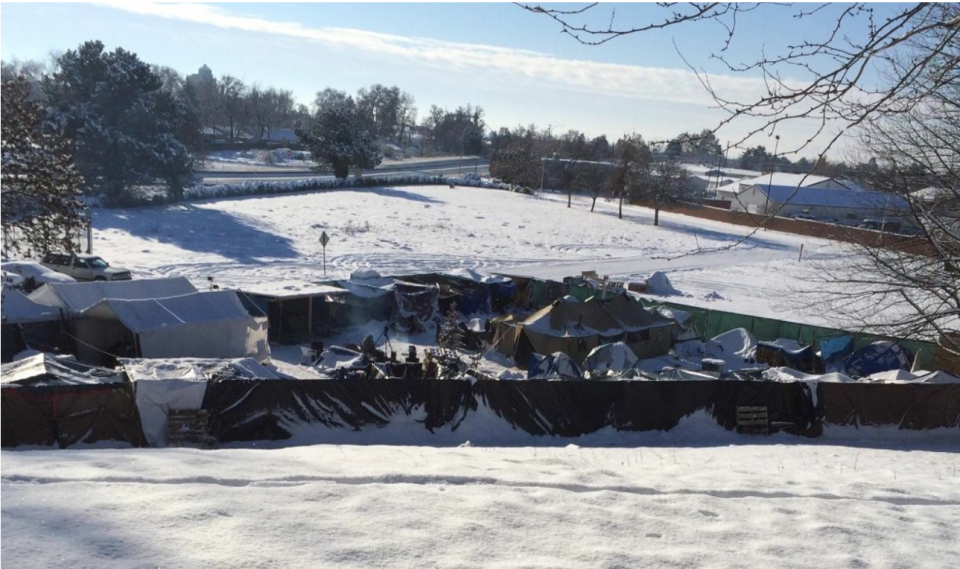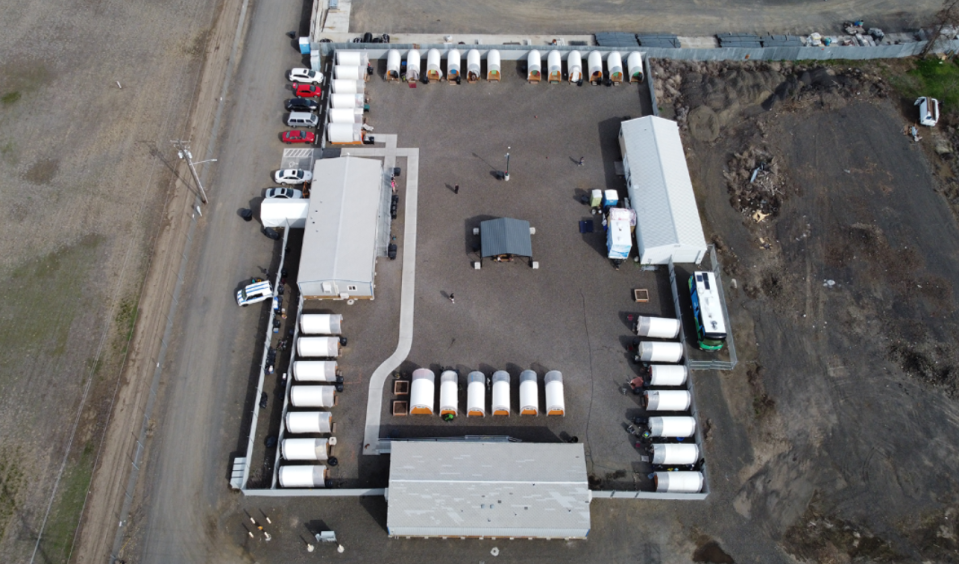In Walla Walla, an example of how a tiny home village can come together

Editor's note: The Kitsap Sun this week reported that a community effort to create a tiny home village in South Kitsap has likely come to an end, after more than seven years. The following story outlines how a similar plan in Walla Walla, led in part by a resident now living in Bremerton, found a way to succeed.
It was 2015 when Dan Clark, an activist and attorney in Walla Walla, watched a group of homeless men moved from an outdoor location where they had been living by local police during a pouring rain storm. When Clark approached and asked the men where they would go next, they responded that they didn’t know.
“It was kind of a classic sweep,” said Chuck Hindman, the former president of the The Walla Walla Alliance for the Homeless, an organization founded soon after Clark became motivated by what he had witnessed.
Clark's reaction was to start working on the creation of a tiny home village to house people in the Eastern Washington community renowned for its wineries and tourism focused on that industry. The Alliance was formed, and then found property on Pine Street, a neighborhood on the outskirts of Walla Walla but still in a residential neighborhood. The vision was a site that could house ten small shelters and a common area for residents.
“You can probably imagine what happened then,” said Craig Volwiler, a former board member with the Alliance who now lives in Bremerton. “The NIMBYs got organized. And there was council meeting after council meeting that lasted from seven (p.m.) until 11 or 12.”
Eventually the Whitman County hearing examiner ruled that the Alliance had the right to build the village, but it could only exist for two months. Such a temporary solution was not going to be worth the high cost.
“I kind of thought at the time, well, this is probably it,” said Hindman.
However, the project survived, and offers lessons of how a community can address the conflict between a desire to create inexpensive housing and concerns from residents opposed to tiny home villages near existing neighborhoods. In an interview with the Sun, Volwiler, who moved to Bremerton with his wife in 2022 to be near children, described how the project overcame public opposition and found a home in Walla Walla.
When the legal decision known as Martin v. Boise, which essentially prohibits homeless sweeps if nearby shelters are not available, came out in 2018, downtown merchants urged Walla Walla’s city government to find a way to clear the homeless people outside their businesses. The city allowed the Alliance to construct a fenced area on the edge of a city park as a sanctioned encampment, where unhoused residents could set up tents.
Related: Why 'unauthorized camping' laws aren't enforced, and what other Northwest cities are doing
“Very quickly we had 60 people,” said Hindman. Homeless people liked that the police left them alone and they didn’t have to hide, he said.
The Alliance tried to manage the encampment itself, but ran into issues. “Well, we had no authority,” said Volwiler.
The Alliance couldn’t kick anyone out. If they called the police, the police wouldn’t come. Some of the more unruly people exploited the system, said Hindman. “It turned into a pretty much of a mess.”

As winter arrived, so did 'Camp Chaos'
Then winter came.
“The nighttime lows were below zero,” said Volwiler. “And people who would come to the gate would come with maybe a backpack on their back, maybe a coat, nothing else.”
Two people got frostbite. They started calling it “Camp Chaos,” said Volwiler.
According to Hindman, the Alliance learned four things: they needed a secure fence with a lockable gate, enforceable rules with someone in charge, lockable storage to stop theft and housing more substantial than tents.
“We wanted it over with and the city wanted it over with, but they were willing to sit down and say, ‘Can we do something better?’” said Hindman. The first experiment had lasted from summer 2016 to May 2017.
The encampment had moved visible homelessness out of downtown Walla Walla, so business owners there wanted any new project to remain somewhere else. Five different times a new location was proposed and then rejected during a city council meeting.
“In the end, no neighborhood would allow them to build it,” said Volwiler.
From a tent city to 'Conestoga huts'
The city then decided to clear out a lot behind a city maintenance building as a potential site. The city manager went to the only stakeholders nearby, three businesses, and promised that the encampment would only be there for a year.
“They actually just said, ‘Okay, we’re gonna do it… Boise decision says we have to do it,’” said Volwiler.
A community college carpentry class built wooden platforms for tents that the Alliance bought for $80 each. Tent city residents had to leave the site during the day, but could return to the same tent every night.
The Alliance decided to build tiny homes, specifically Conestoga huts, because tents only lasted about two months. Over the summer of 2017, 12 volunteers built 31 huts. Each six-by-ten foot hut took about 40 hours of labor and $1,100 worth of material. The huts were insulated with a lockable door, but mostly consisted of a wooden pallet for a sleeping bag. They had no air conditioning or heat, but they were able to hold up during the winter.
“We built [a Conestoga hut] and put it on a trailer parked in front of City Hall… and gave tours to the people who were coming to the council to show them that this was a viable option.”

Finding a home for huts, and surrounding it with services
Despite the city’s promise that the huts would be gone after one year, it took two years to find a permanent home. The current location is in an industrial area about two miles from the downtown, close to the state penitentiary and with a nearby bus stop.
“I think the city’s happy they’re out of sight and out of mind,” said Volwiler.
Two portable classrooms were installed, to be used as a common space for meals and an office for ‘Exit Homelessness’ peer support workers, who can draw upon their personal experience of being homeless or addicted in a program that helps provide tools and support in the path towards finding housing.
“People that come to camp don’t want to engage at the beginning there,” said Volwiler. “They’re kind of timid, they’re not quite sure where they are, what they’re doing. They don’t like being homeless. To them being homeless means keep to yourself or you don’t know who to trust. And so forming a relationship first is the first step.”
During the pandemic, residents were no longer kicked out during daytime hours. Engagement with social services jumped from 10-15% to 60%.
In 2022, an average of 55 people stayed in the village each night, totaling 19,222 nights of care. The Alliance reported that 183 different individuals were served, and 37 have moved on to better situations. A third of the people stay for more than a year, another third stay for about 30 days, and the last third stay for even less time.
Expenses, and attitudes, as challenges
In 2022, the camp cost $575,000 to run, which does not count the three meals a day provided by volunteers. It costs about $30 per night to house each person.
“We faced the same stuff that you’re facing here," Volwiler said. "A lot of NIMBYs. City council balked at their first tiny home facility over and over and over again and put so many restrictions on it it didn’t get built. But at the same time, they figured out that they had to move people out of downtown. So they needed a no camping ordinance. And the Boise legal decision came and they had to produce a space.
“And why this works is that it’s managed,” said Volwiler, “There are staff there 24/7.”
Most of the $325,000 from the government goes to private security from 10 p.m. to 9 a.m, which the city demanded after the first encampment closed. In over seven years, they have only had one instance of a camper assaulting another camper.
“The people that are there love it. And they like it because it’s a safe place.”
Volweiler spoke about how homeless people living on the street can’t sleep or leave their tent, because they have to protect their property. “So they’re pretty much stuck and so having security is a huge, huge deal,” especially for women, who make up a third of the village.
Bathrooms are also essential. Back when the village was only open during the day, people would be waiting in line to get back in, but there would be no bathroom for them to use, so they relieved themselves in the bushes nearby.
“And so we said, ‘Well, why don’t we just put in a couple of porta potties,’” said Volwiler, “We didn’t have a problem right away.”
At one of the parks nearby, people complained about needles being left out.
“So we said, ‘Why don't you put a needle disposal in the restrooms?’ He said he did and the needles stopped appearing on the ground," Volwiler said. “We found that most homeless people don’t want to bother other folks. They just want a place to live.”
Related: Bremerton won't clear encampments, so council opens discussion on changes to current law
A city that takes care of its own
Volweiler said that 85% of the people who live in the camp grew up in Walla Walla. “[People] were saying: Seattle, Portland, they’re buying bus tickets to send them to Walla Walla. None of that’s true. What happens is, if you’re homeless, you stay where you’re comfortable.”
Many of the 18- to 25-year-olds living in the camp have family in town.
“And their parents will come and drop them off and say, ‘We can’t deal with him anymore.’ Or it will be Christmas and say, ‘He can come home for Christmas for a few days’ or ‘It’s really cold out, he can come live with us for a few days, but then he’s got to go back to camp.’”
When asked what Walla Walla was able to do successfully, Volweiler said, “We had a city manager, who had the balls to say, ‘There’s a court decision that says we have to provide a place… We will try the absolute minimum first, which is the fenced yard and see if that works. And if that works, great. If it doesn’t, we’ll figure out something else to do.’”
The tiny home village is expanding to the other side of the lot with $15,000 tiny homes from Everett, which are ten by ten with electricity, heat, and a bed.
“The funding problem that Bremerton is facing and everyone’s facing is to build yourself out of homelessness,” said Volwiler. The per unit cost of constructing a shelter is much higher than a tiny home, which hold up much better than tents. “A tiny home village, I think, is part of the answer.”
Reporter Phillip Chin is a student intern in the Kitsap Sun's newsroom, supported by donations to the Kitsap Sun Journalism Fund. To contribute, search for the Journalism Fund's page at the Kitsap Community Foundation website.
This article originally appeared on Kitsap Sun: How a nonprofit focused on homeless succeeded in Walla Walla

